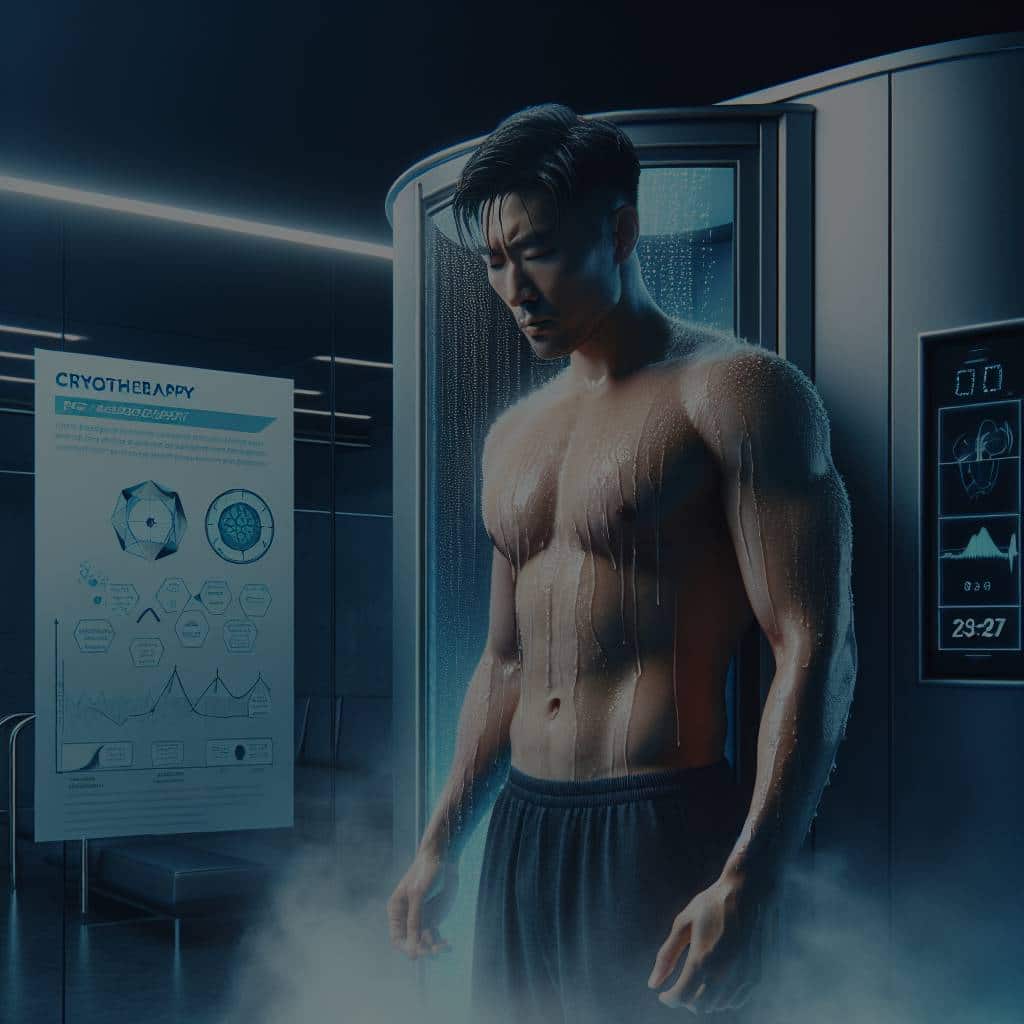What Are the Health Advantages of Cryotherapy in Post-Exercise Recovery?

In the ever-evolving field of health and wellness, a growing number of athletes and fitness enthusiasts are turning to cryotherapy for muscle recovery and pain relief. Originating in Japan in the late 1970s, Whole Body Cryotherapy (WBC) quickly gained popularity in Europe before making its way to North America. WBC involves exposure to extremely low temperatures, often below -100°C, in a controlled environment, typically a cryotherapy chamber. This article will delve into the health benefits of this cold therapy, particularly in relation to exercise recovery.
Understanding Cryotherapy and Its Principles
Before exploring the benefits of cryotherapy, it is essential to understand its principles and how it affects the body. During a WBC session, you step into a cryotherapy chamber, typically for a period of 2 to 3 minutes. This exposure to extreme cold causes your blood vessels to constrict, reducing blood flow to the skin and extremities.
En parallèle : Can Pet Therapy in Workplaces Contribute to Reduced Stress and Improved Employee Morale?
Upon exiting the chamber, your body reacts to the sudden warmth by dilating the blood vessels, prompting a rush of oxygenated blood filled with nutrients and enzymes back to the skin and muscles. This process, known as vasodilation, helps flush out toxins and facilitates the healing and recovery process.
Cryotherapy and Muscle Recovery
Cryotherapy has been widely embraced in the athletic community for its potential to speed up muscle recovery post-training or competition. A study published in the Journal of Athletic Training found that WBC significantly reduced muscle pain and inflammation in runners after a strenuous workout.
Sujet a lire : How Does the Adoption of Anti-Pollution Skincare Products Combat the Effects of Urban Smog?
Intense exercise often leads to micro-tears in muscle fibers, triggering an inflammatory response as the body begins to repair the damage. Cryotherapy helps control this inflammation, reducing pain and discomfort. More importantly, it allows athletes to return to training or competition more quickly, improving their performance and reducing the risk of overuse injuries.
In addition, the rapid cooling and reheating of the body during cryotherapy can stimulate the production of cold-shock proteins. These proteins have been shown to help in muscle regeneration and repair, further enhancing the recovery process.
The Impact of Cryotherapy on Blood Circulation
Improved blood circulation is another significant benefit of cryotherapy. As mentioned earlier, the extreme cold triggers vasoconstriction, followed by vasodilation once you step out of the chamber. This rapid expansion and contraction of blood vessels acts like a pump, improving blood flow and circulation throughout the body.
Enhanced blood circulation means more oxygen and nutrients are delivered to your muscles, aiding in their repair and recovery. It also helps eliminate waste products and toxins more efficiently. This improved blood flow can led to overall better health and wellbeing, as efficient circulation is vital for all bodily functions.
Cryotherapy for Pain Management
Beyond post-exercise recovery, cryotherapy has also been studied for its potential in pain management. Exposure to extreme cold can numb the nerves, providing temporary relief from chronic pain conditions such as arthritis, fibromyalgia, and migraines.
In a study published in the European Journal of Pain, researchers found that WBC was effective in reducing pain and improving quality of life in individuals with chronic low back pain. It is believed that the cold temperatures not only numb the nerves but also slow down their transmission of pain signals to the brain.
As with any other treatment, it is critical to consult a healthcare provider before starting cryotherapy. While it is generally safe, it may not be suitable for everyone, particularly those with certain health conditions such as uncontrolled high blood pressure or cardiovascular disease.
The Psychological Effects of Cryotherapy
Cryotherapy’s benefits extend beyond the physical. Many individuals who undergo WBC sessions report increased energy levels and improved mood. This is likely due to the release of endorphins, the body’s natural "feel good" hormones, as a response to the cold exposure.
The psychological benefits of cryotherapy can be particularly useful for athletes, who often have to manage not only the physical strain of training and competition but also the mental stress that comes with it. Regular cryotherapy sessions may help improve their mental resilience, enhance their focus, and ultimately, boost their performance.
In conclusion, cryotherapy offers a range of health benefits, particularly in the context of post-exercise recovery. These include improved muscle recovery, better blood circulation, effective pain management, and enhanced psychological wellbeing. While more research is needed to fully understand the long-term effects and potential risks of this treatment, the existing evidence suggests that cryotherapy could be a valuable tool for athletes and fitness enthusiasts alike.
The Role of Cryotherapy in Weight Loss
One of the lesser-known benefits of cryotherapy is its potential for assisting in weight loss. Our bodies naturally burn extra energy to maintain our core temperature when exposed to cold. In a cryo chamber, your body is briefly subjected to extreme cold, causing it to activate metabolic processes to produce heat. In response to the low temperatures, your metabolic rate is increased, and you burn more calories.
A session in a cryo chamber can reportedly burn up to 800 calories. It’s important to note though that this calorie-burning effect doesn’t happen during the session itself, but in the hours following treatment as your body continues to warm itself back up. This process, known as thermogenesis, may help people achieve their weight loss goals faster when combined with a balanced diet and regular exercise.
Furthermore, a study indexed on Google Scholar has shown that cryotherapy can also help reduce fatty tissue. The cold temperatures may help stimulate the conversion of white fat, which stores energy, into brown fat, which burns energy. However, as with any weight loss treatment, individual results can vary, and cryotherapy should not replace a healthy lifestyle.
Cryotherapy and Exercise-Induced Muscle Damage
Exercise-induced muscle damage, often characterized by muscle soreness, is a common issue for athletes. This muscle damage occurs due to the stress placed on muscles during exercise, particularly during high-intensity or unfamiliar activities.
Studies, available on NCBI and NLM, suggest that cryotherapy can help reduce exercise-induced muscle damage. The cold exposure provided by cryotherapy can significantly reduce inflammation, pain, and muscle damage. It can also speed up recovery time, enabling athletes to return to their training routine more quickly.
Cold water immersion, another form of cold therapy, has been commonly used to treat muscle soreness. However, cryotherapy offers a more extreme and efficient approach, potentially providing faster and more significant benefits. According to some articles, cryotherapy may be more effective than cold water immersion for reducing muscle soreness and accelerating recovery.
Conclusion
Cryotherapy, particularly Whole Body Cryotherapy, has emerged as a popular and beneficial treatment for promoting post-exercise recovery, improving blood flow, managing pain, boosting mood, and even assisting in weight loss.
Its potential to reduce inflammation and exercise-induced muscle damage makes it an attractive recovery option for athletes and fitness enthusiasts. At the same time, its ability to promote weight loss offers an appealing option for those looking to shed extra pounds.
While it is generally safe, it’s important to remember that cryotherapy might not be suitable for everyone. Always consult a healthcare provider before starting any new treatments. The use of cryotherapy, like any other health practice, should be tailored to individual needs and health conditions.
As more research is conducted, the benefits of cryotherapy will become even clearer. Nevertheless, the existing evidence paints an exciting picture of cryotherapy’s potential and its future role in health and wellness. The advancements in the understanding of the benefits of cryotherapy make it a promising tool for exercise recovery and overall health improvement.
